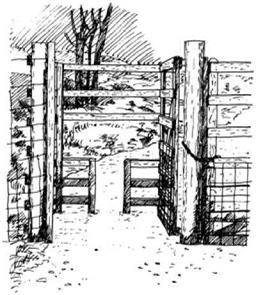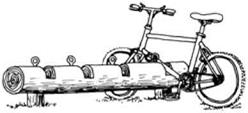Another growth area of trail use is cross-country or nordic skiing, used to follow trails during the winter season. The same principles of trail route design should be followed as have already been described, as one of the enjoyable aspects of such skiing is the chance to see wildlife, frozen waterfalls and lakes and splendid snowy scenery. Routes through forests are frequently preferred, as the trees catch the snow, and the day-long shade in the winter reduces the thawing. There is also less chance of the snow being blown off the trail.
In many urban fringe and accessible forests in Scandinavia or parts of North America, extensive systems of specially prepared trails are provided. These are of different lengths and for different levels of proficiency. Usually the p repared trails are wide enough—up to 3 m (10ft)—to permit one or two sets of parallel tracks for the traditional method of skiing side by side with room for speed skiers using the skating technique. Lighting might also be provided in northern latitudes where daylight is short or nonexistent in winter months. These routes should be
|
A modified kissing gate in a deer fence will allow all-terrain bikes to pass through but not motorbikes. Glen Affric, Scotland. |
|
A bicycle lock made from a large log with slots cut from it and large eyelets to lock the bikes to. |
waymarked like hiking trails, with information provided at the start on length, difficulty, expected duration and any special features to be encountered.
In wilder places the chance to ski on new, unprepared snow and experience the stillness of the winter forest provides a marvellous experience.
Forest roads covered in snow have far less visual impact than at other times of year, and make excellent routes from which other trails can be chosen. Hiking trails may also be used if the gradients are not too steep or dangerous.
Along the route it may be appropriate to locate benches and shelters such as those described for hiking trails and picnicking. In remoter areas many people enjoy skiing to a cabin, cooking food and camping before skiing back the next day. Shelters with fireplaces and fuel are provided along such networks in Finnish Lapland, for example, where sausage roasting over a fire is a traditional experience after a day’s skiing.
Other artefacts that are needed are racks where skis can be stacked when taken off and for leaning them against to apply resin coatings. In busier places toilets might be needed (see Chapter 7).
![]()





